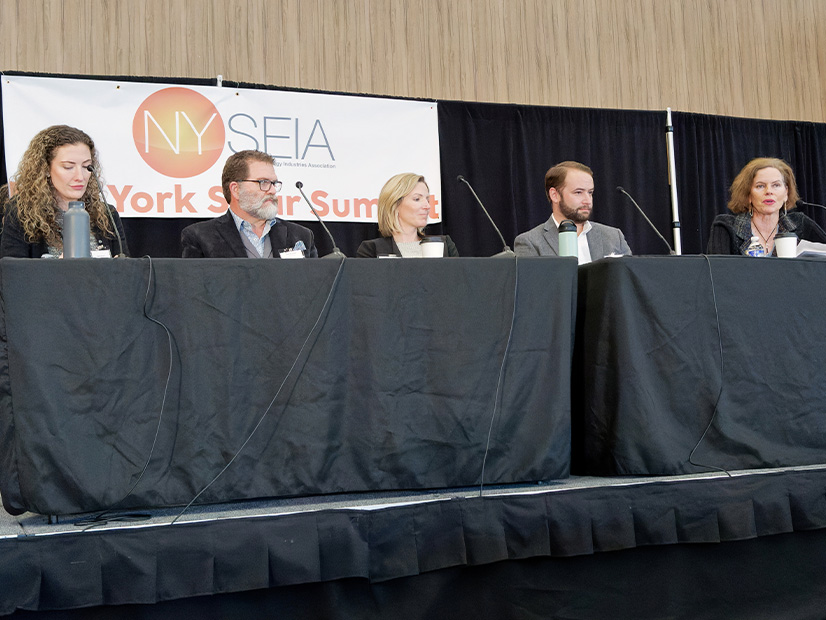
ALBANY, N.Y. — New York’s upstate/downstate power dynamic and its home rule tradition are creating siting challenges for solar developers, speakers told the New York Solar Energy Industries Association’s 2022 Solar Summit last week.
To Betta Broad of New Yorkers for Clean Power, New York’s strong home-rule tradition is a double-edged sword. It was central to the strategy to block hydraulic fracturing in the state, she said, but now is being used to block renewable projects.
“In [the fracking battle], home rule was really our friend,” Broad said. “But now here we are facing a lot of issues related to home rule that don’t necessarily help us scale up solar and renewables the way that we want to.”
The majority of New Yorkers do not even know about the climate mandates contained in the Climate Leadership and Community Protection Act (CLCPA), she said.
Mark Richardson of U.S. Light Energy said local opposition to solar — which ranges from Not In My Back Yard absolutism to infrastructure concerns — has led local governments to adopt creative blocking strategies such as restrictive zoning, domestic manufacturing requirements and untenable setback zones.
The state did weaken home-rule power over solar projects with passage of the Section 94-C law in 2020 and with creation of the Office of Renewable Energy Siting, he said. But 94-C and ORES are not cure-alls, and they do not apply to projects smaller than 25 MW, he said.
Genevieve Trigg, who represents project developers for the law firm Barclay Damon, summarized the top three challenges to siting solar in New York: the roadblocks in the local review process and the amount of time they consume; the cost uncertainty of project development, with no standard figure for the host benefit fees that municipalities are demanding; and the inherent conflict between home rule and the CLCPA, which sets statewide policy.
“I’m in the thick of this on a daily basis,” Trigg said. “We have seen some tremendous progress in the last five years in the solar industry, but it seems that a lot of our developer clients are still facing a tremendous amount of opposition and various challenges.”
She did not bother offering anecdotes.
“I think if you ask any developer in the room they have their own set of horror stories,” Trigg said.
The issue of “two New Yorks” also came up. Upstate regions already are running mostly on emissions-free electricity and downstate relies mostly on fossil-generated power. The state’s top elected officials — all Democrats and mostly downstaters — are counting on massive solar arrays and onshore wind farms built upstate to power the downstate region. This has sparked some pushback upstate, particularly outside its cities.
Assemblymember Patricia Fahy, a Democrat from the capital city, told the audience she felt like she needed to duck when the topic turned to solar power during a farm tour this past summer.
“We live in the most divided of times,” she said.
Fahy, a strong proponent of climate protection and decarbonization, did not offer much hope for quick improvement on this front, saying home rule is a cherished tradition in New York.
“All of this is a full-employment policy for lawyers,” she said. “But we will have to continue to legislate because we have these goals. … I know at times these do seem rather insurmountable, but it is those examples that we hope to learn from as we work to streamline these systems.”


